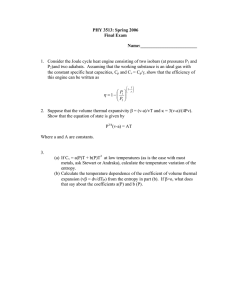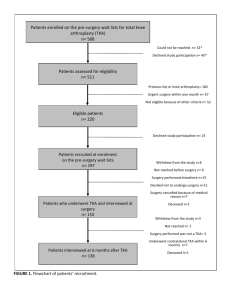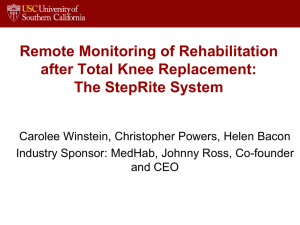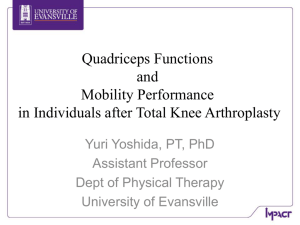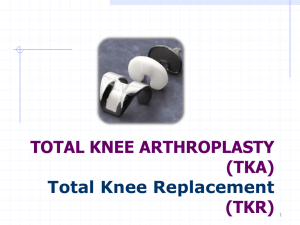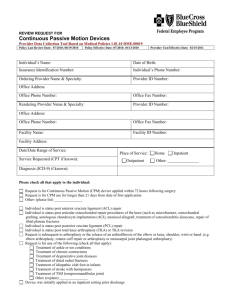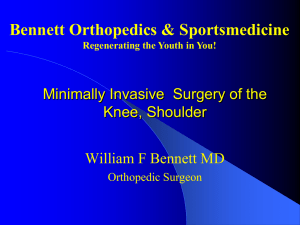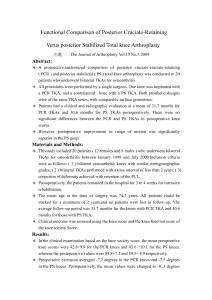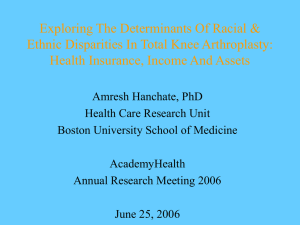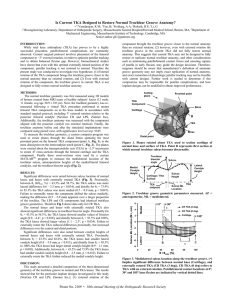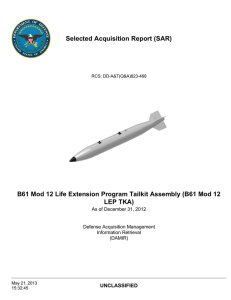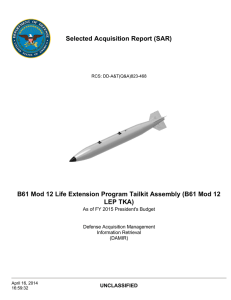Yuri Yoshida, MS. - Dissertation Proposal Defense
advertisement
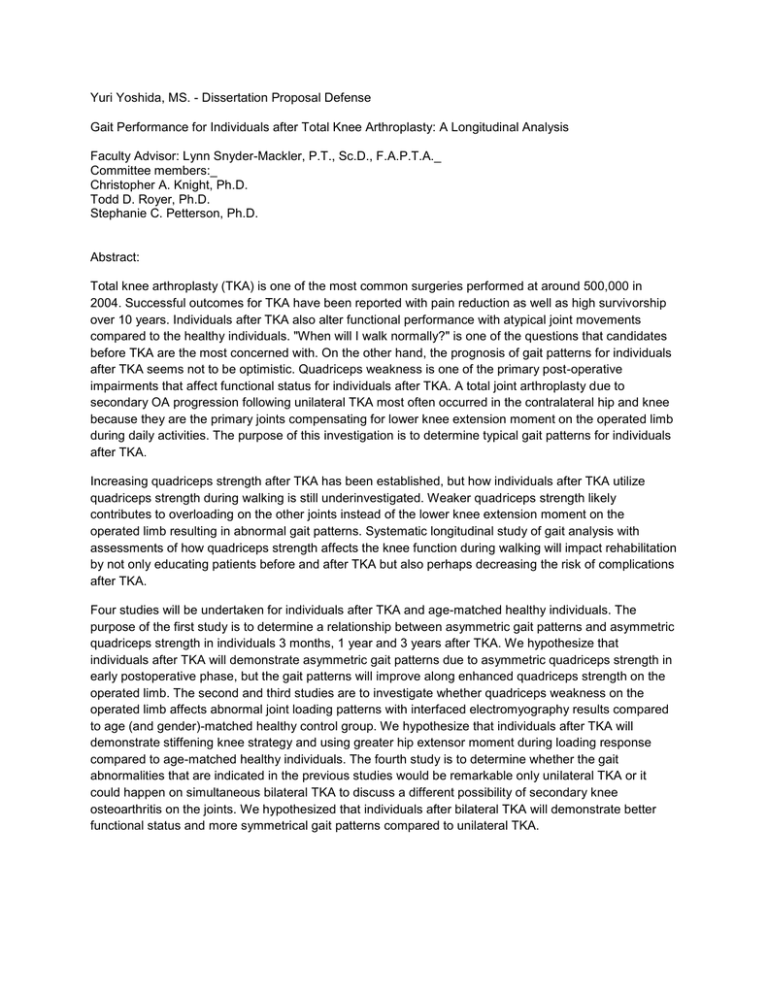
Yuri Yoshida, MS. - Dissertation Proposal Defense Gait Performance for Individuals after Total Knee Arthroplasty: A Longitudinal Analysis Faculty Advisor: Lynn Snyder-Mackler, P.T., Sc.D., F.A.P.T.A._ Committee members:_ Christopher A. Knight, Ph.D. Todd D. Royer, Ph.D. Stephanie C. Petterson, Ph.D. Abstract: Total knee arthroplasty (TKA) is one of the most common surgeries performed at around 500,000 in 2004. Successful outcomes for TKA have been reported with pain reduction as well as high survivorship over 10 years. Individuals after TKA also alter functional performance with atypical joint movements compared to the healthy individuals. "When will I walk normally?" is one of the questions that candidates before TKA are the most concerned with. On the other hand, the prognosis of gait patterns for individuals after TKA seems not to be optimistic. Quadriceps weakness is one of the primary post-operative impairments that affect functional status for individuals after TKA. A total joint arthroplasty due to secondary OA progression following unilateral TKA most often occurred in the contralateral hip and knee because they are the primary joints compensating for lower knee extension moment on the operated limb during daily activities. The purpose of this investigation is to determine typical gait patterns for individuals after TKA. Increasing quadriceps strength after TKA has been established, but how individuals after TKA utilize quadriceps strength during walking is still underinvestigated. Weaker quadriceps strength likely contributes to overloading on the other joints instead of the lower knee extension moment on the operated limb resulting in abnormal gait patterns. Systematic longitudinal study of gait analysis with assessments of how quadriceps strength affects the knee function during walking will impact rehabilitation by not only educating patients before and after TKA but also perhaps decreasing the risk of complications after TKA. Four studies will be undertaken for individuals after TKA and age-matched healthy individuals. The purpose of the first study is to determine a relationship between asymmetric gait patterns and asymmetric quadriceps strength in individuals 3 months, 1 year and 3 years after TKA. We hypothesize that individuals after TKA will demonstrate asymmetric gait patterns due to asymmetric quadriceps strength in early postoperative phase, but the gait patterns will improve along enhanced quadriceps strength on the operated limb. The second and third studies are to investigate whether quadriceps weakness on the operated limb affects abnormal joint loading patterns with interfaced electromyography results compared to age (and gender)-matched healthy control group. We hypothesize that individuals after TKA will demonstrate stiffening knee strategy and using greater hip extensor moment during loading response compared to age-matched healthy individuals. The fourth study is to determine whether the gait abnormalities that are indicated in the previous studies would be remarkable only unilateral TKA or it could happen on simultaneous bilateral TKA to discuss a different possibility of secondary knee osteoarthritis on the joints. We hypothesized that individuals after bilateral TKA will demonstrate better functional status and more symmetrical gait patterns compared to unilateral TKA.
